Learn to cook filet mignon like the best steakhouses. Start by pan-searing it briefly in a cast iron skillet, then finish cooking it in the oven. Fast and easy, it makes perfectly juicy and tender beef filet steak—our favorite special dinner recipe.
🐄Ingredients
Beef tenderloin filets—6 to 8 ounces, about 1 to 1 ½ inches thick
Butter—or oil
Seasoning—Kosher salt and black pepper. Or seasoning of your choice.
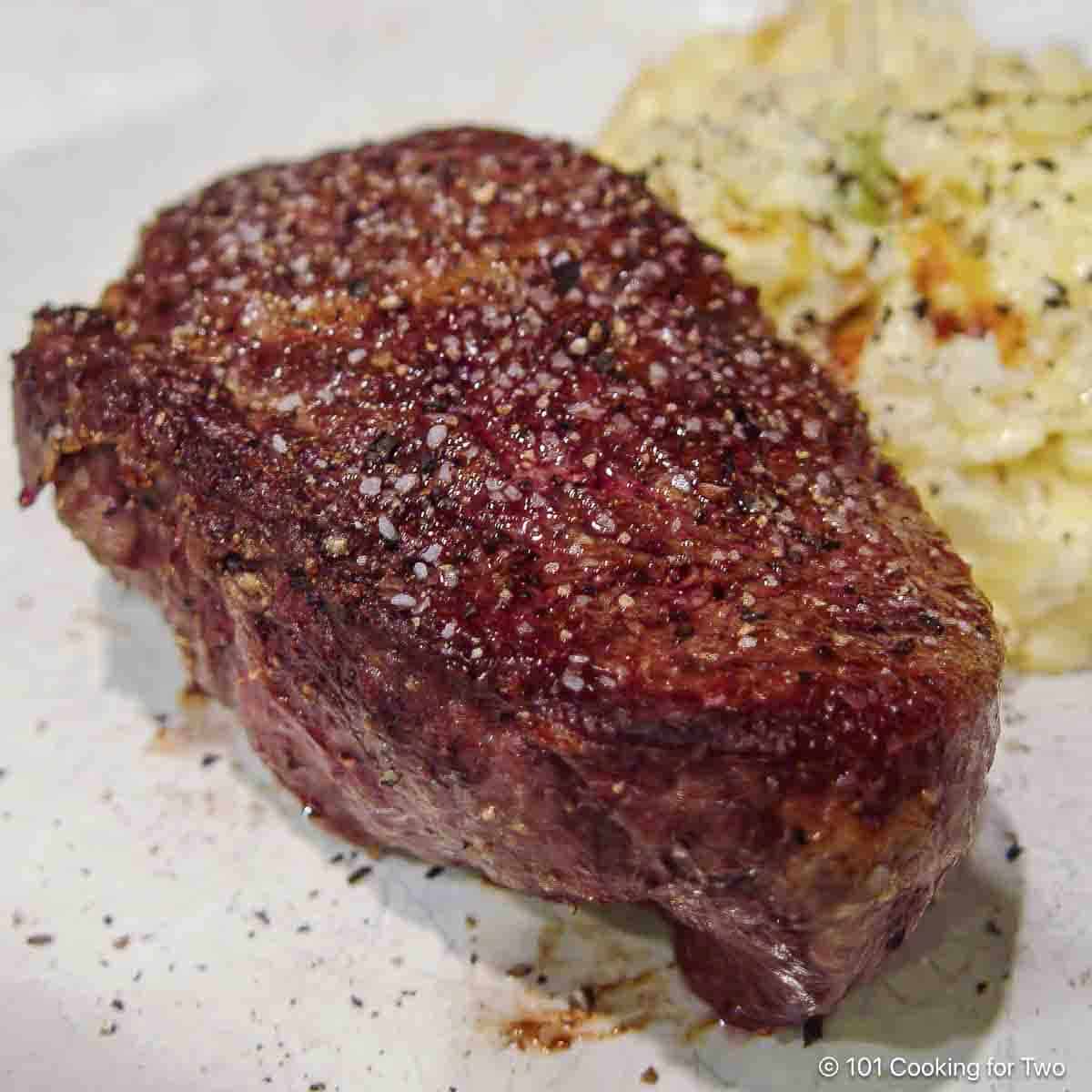
Jump To (scroll for more)

Featured Comment from Gary:
"This is my go-to recipe for Filet Mignon. They are always perfect."
The best way to cook beef tenderloin filets combines two time-honored techniques. Pan-searing on the stovetop will create a tasty Maillard reaction for flavor. Then, cook in an oven to your perfect final temperature.
Learn to sear and bake filet mignon at home. My beef tenderloin filet recipe is perfect for a date night recipe; just follow the simple step-by-step photo instructions.
👨🍳How to Cook Filet Mignon—Step-by-Step
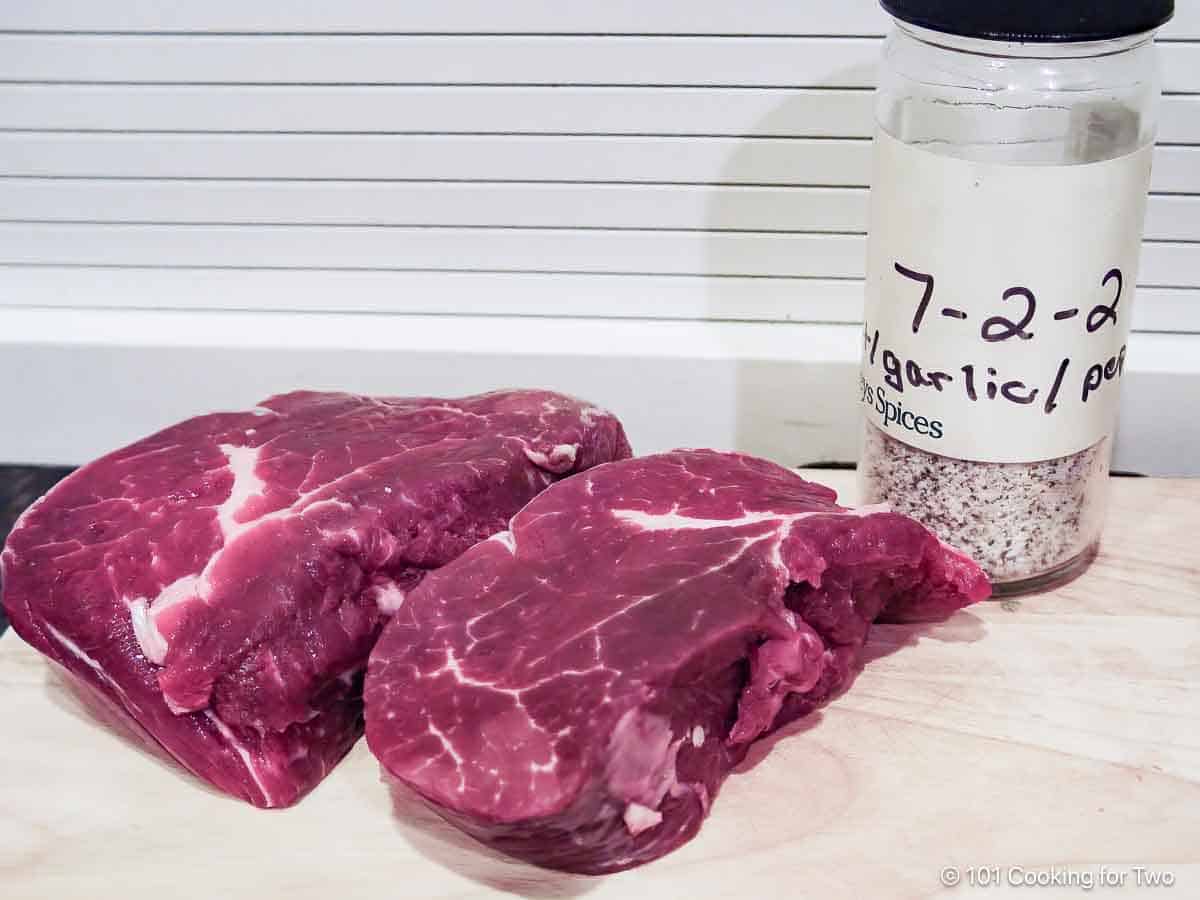
1. Preheat the oven to 400°. If you have time, rest at room temperature for 30-60 minutes.
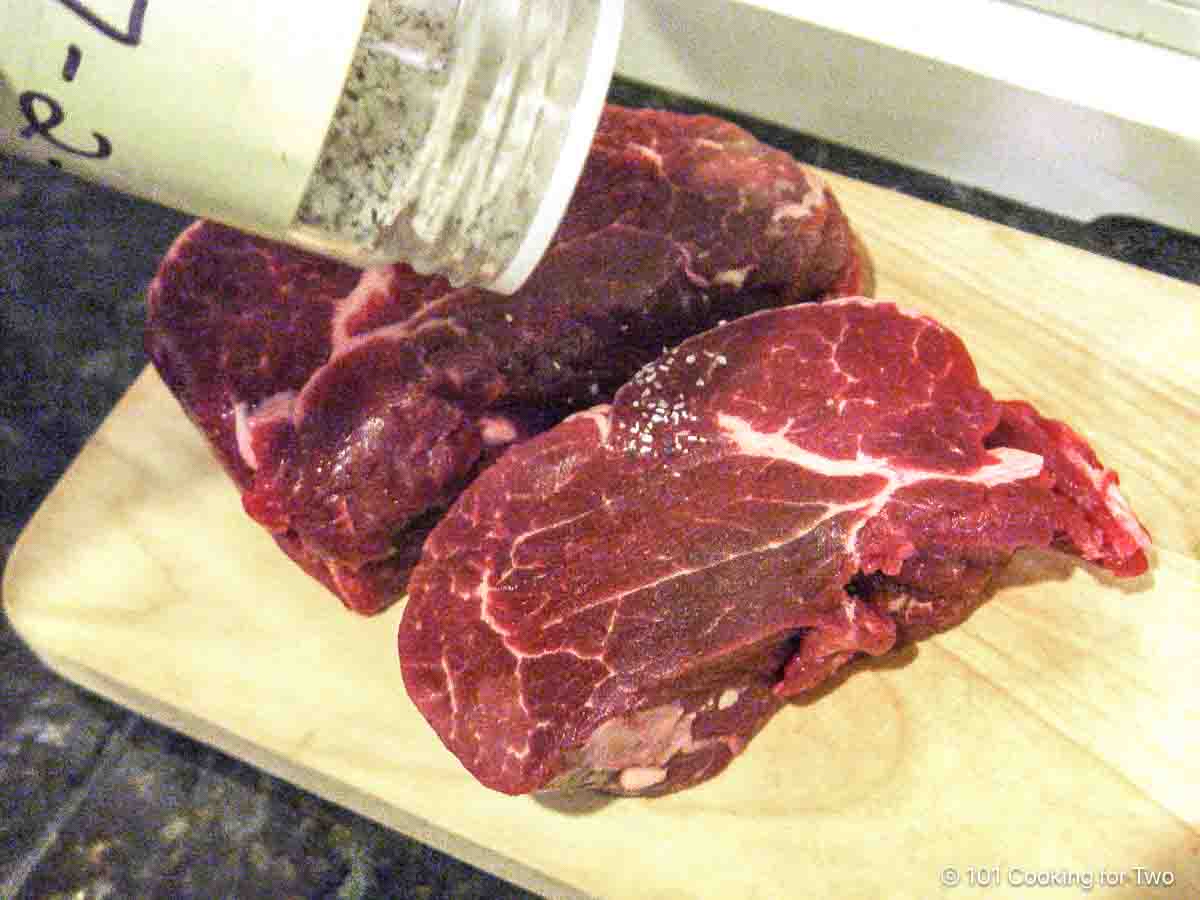
2. Pat dry well with paper towels and season to your taste.
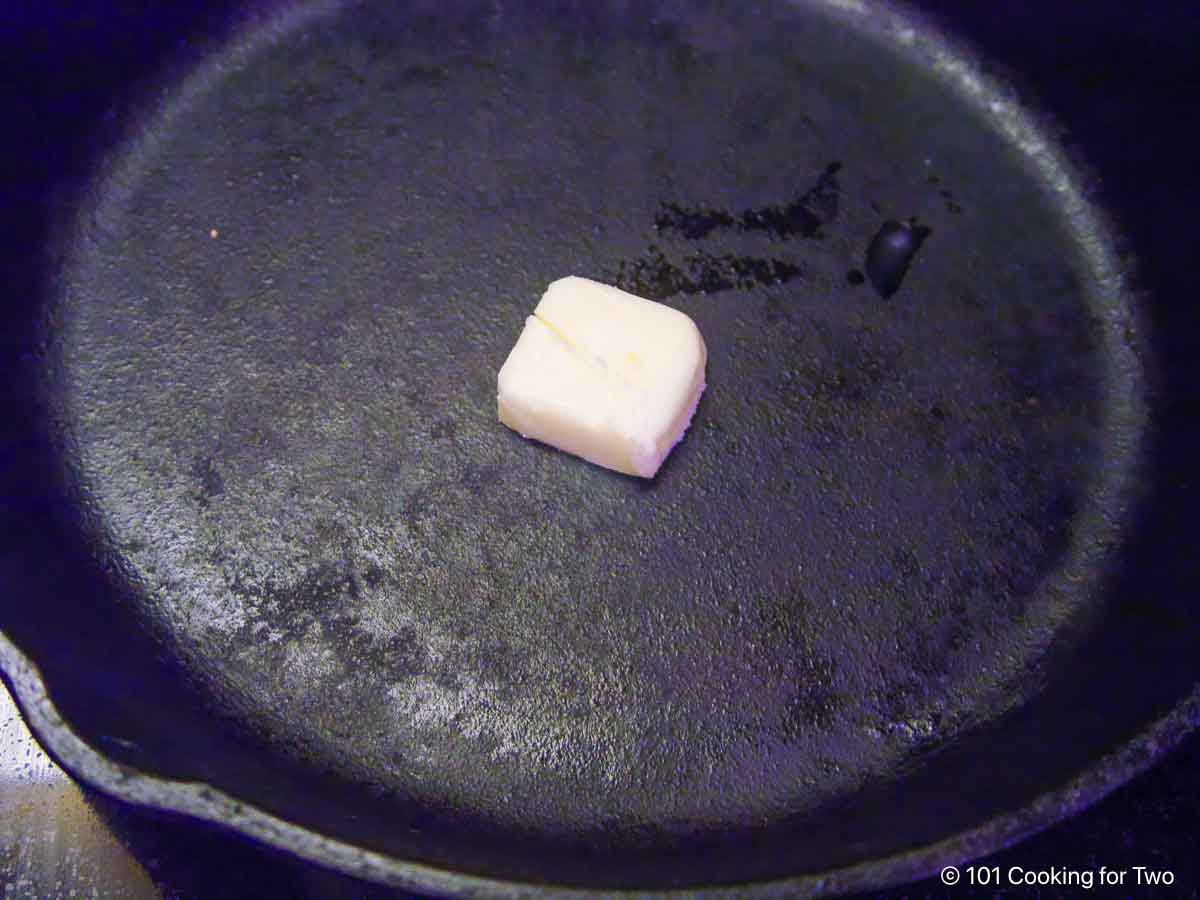
3. In a cast iron or oven-safe skillet, melt 1 tablespoon of butter over medium-high heat.
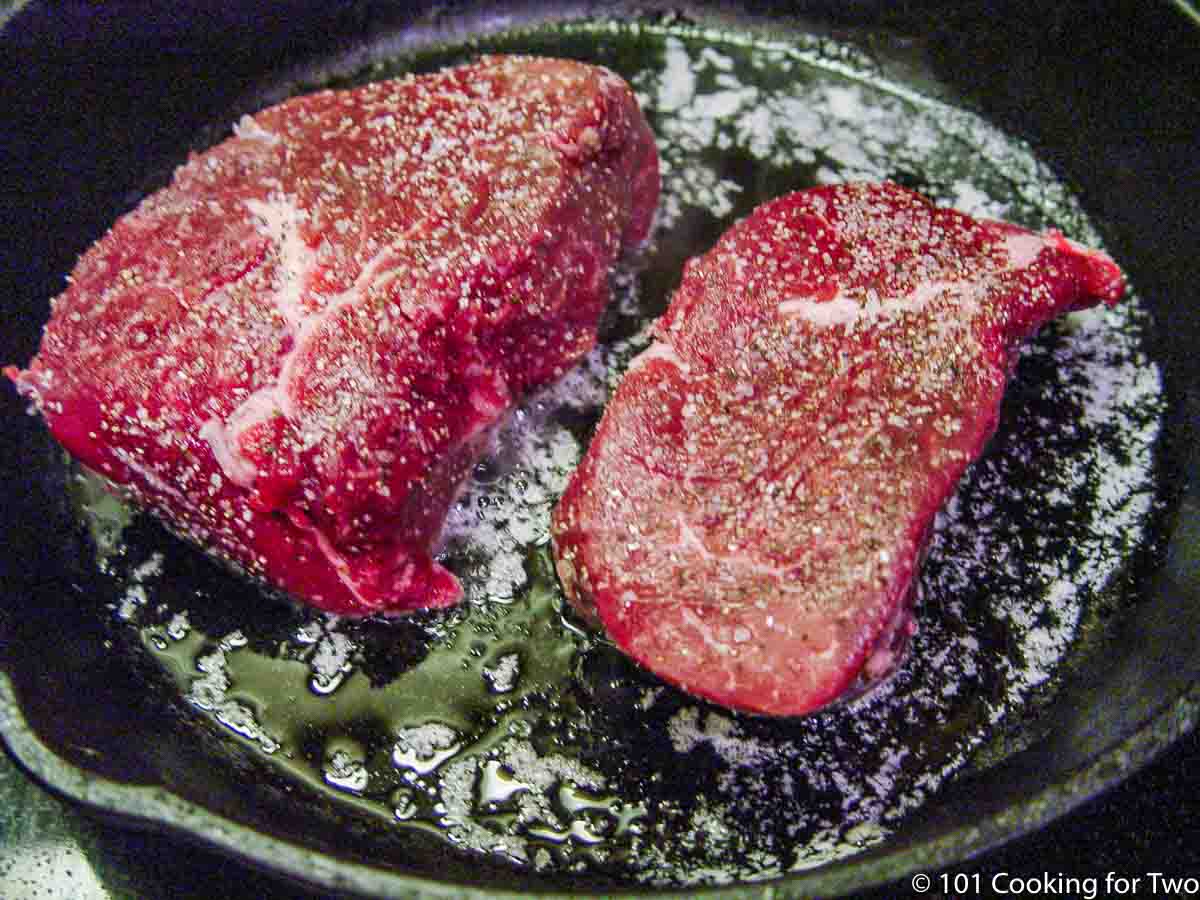
4. When hot, sear both sides of the filets for 2-3 minutes.
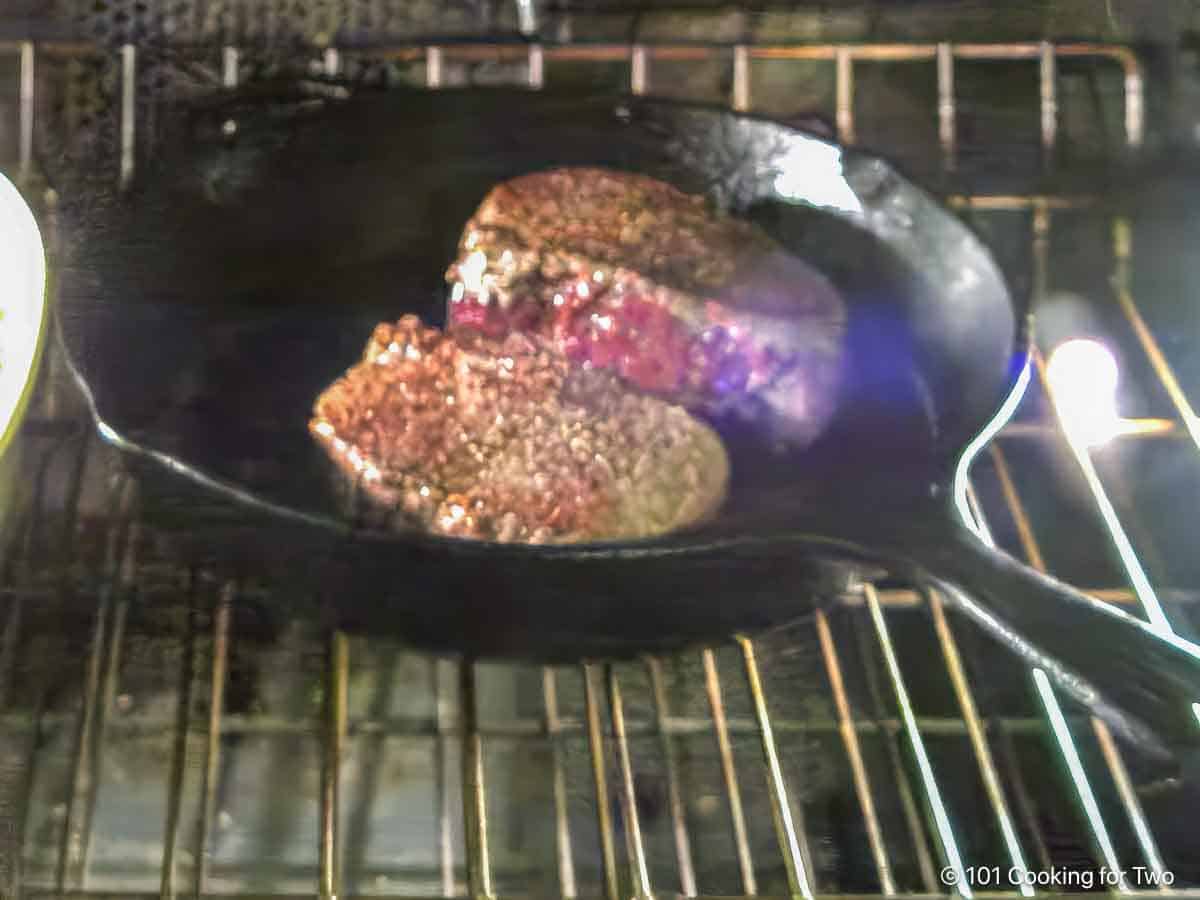
5. Transfer to the preheated oven. Cook to your desired internal temperature minus about 3°-4°. Medium-rare takes about 9-11 minutes to reach an internal temperature of about 135°- 140°.
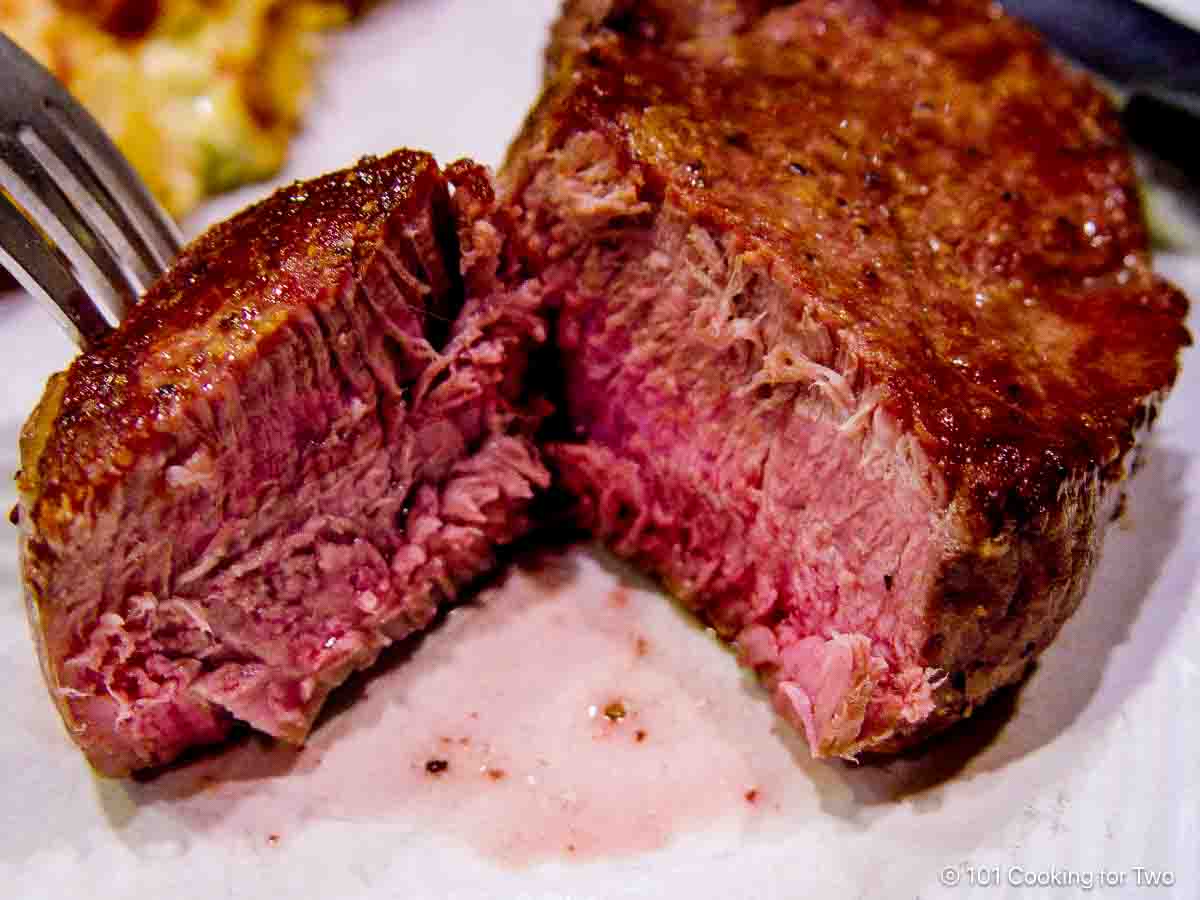
6. Remove from pan, tent lightly with foil on a plate, and rest for 5-8 minutes before serving.
For more details, keep reading. See the Recipe Card below for complete instructions and to print.
⏰How long to cook filet mignon
The oven time for a medium-rare 1-inch filet in a 400° oven is about 5 to 7 minutes, plus 4 minutes of searing, for a total cooking time of 9 to 11 minutes. Remember to allow an additional 5-8 minutes of rest after cooking.
Approximate cooking times in a 400° oven are estimated for planning only. The estimated times are for 1-inch thick filets; thicker filets take longer.
- Rare—cold red center(125°-130°)—4-minute sear and 4 to 5 minutes oven time for about 8 to 9 minutes total cooking time. Please see the caution below for rare.
- Medium rare—warm red and soft center(130°-135°)—4-minute sear and 5 to 7 minutes oven time for about 9 to 11 minutes total cooking time.
- Medium—pink and firm (140°-150°)—4-minute sear and 8 to 10 minutes in the oven, for about 11 to 13 minutes total cooking time.
- Medium well—minimal pink(150°-155°)—4-minute sear and 12 to 15 minutes oven time for about 16 to 19 minutes total cooking time—not recommended.
- Well done—firm and brown(160°+ )—4-minute sear and 15+ minutes oven time for about 19+ minutes total cooking time—not recommended.
Actual cooking time will vary by thickness, rest time, searing, and oven temperature—NEVER COOK BY TIME ALONE, and use a thermometer.
Pick the internal temperature you want when served. Remove the steak a few degrees less and tent lightly with foil. The filet temperature will rise 2°-4° while resting. You can not uncook meat but can always cook it a bit more. Be sure to check your temperature early,
WARNING FOR RARE: For rare, it may be only a few minutes in the oven. If you did an intense sear with a rest to room temperature or if your filets are thinner, check the temperature of the meat when it goes into the oven if you want it to be rare. It is hard to hit what you want, so observe and remove it early. You can always cook it a bit more later.
Tips and options to get it right every time
Quality matters—buy prime grade if you can afford it, or well-marbelized choice grade. If you have questions, talk to your local butcher—they love to discuss their products and have a wealth of knowledge.
The thicker the steak, the more important the precooking rest at room temperature becomes to achieve the final internal temperature you want. If the steak is over 1 ½ inches thick, see the FAQ section for the reverse searing cooking method.
Skipping the rest before cooking will increase the cooking time by as much as 50% and adversely affect the surface.
If you don't have a cast-iron skillet, any oven-safe skillet that can move from stovetop to oven will do. Most skillets will be oven-safe but have a temperature limit set by the manufacturer.
How to season tenderloin filet steaks
A good shake of Kosher or sea salt and black pepper is enough. We like to use my All-Purpose Seasoning Salt, which adds garlic. Other seasoning options include rosemary or a sprig of fresh thyme. Try some homemade Steak Butter with garlic, blue cheese, and herbs of your choice.
Real butter adds some excellent flavor. If you have issues with smoking butter, then in the future, use high-quality vegetable oil.
If you want to use fresh herbs, like thyme or rosemary, put them on top of the steaks with a pat of butter as you move them to the oven.
The timing of any salt is important. Do not put salt on the meat for more than a few minutes before cooking unless you do it for 60 minutes or more. Between those times, it will pull water out of the meat but not allow enough time to reabsorb back into it.
Other steak recipes
Grilled Filet Mignon
The perfect Filet Mignon Recipe uses the tried and true sear and oven bake method to get the best filet mignon every time—moist, tender, and flavorful.
Check out some other great steak recipes, such as Grilled New York Strip Steaks, Seared and Baked Strip Steak, and Grilled T-bone Steak.
🍽️What to serve with filet
Filet mignon goes with almost anything you like with a nice meal. Our favorites are crusty bread, Oven Roasted Baby Red Potatoes or Parmesan Baked Potatoes, and a side salad or hot vegetables like Green Beans with Almonds or Roasted Asparagus.
Choose a red wine like Merlot, Pinot Noir, or Cabernet for a wine pairing.
🍳Why use cast iron
The best choice is a cast-iron skillet. Its flat bottom transfers heat over its surface without hot spots, making cast iron the best option for pan-searing meat. It is cheap, and every cook should have a skillet or two.
❓FAQs
No. You must monitor the temperature correctly, or you will ruin your expensive meat. Please do not try to cook by time alone.
An instant-read meat thermometer will serve you well with this and many other recipes.
Resting before cooking will elevate the internal temperature of the meat before cooking. This helps prevent overcooking and drying of the surface of meat while getting the correct internal temperature.
30 to 60 minutes will do a good job, but even 15 minutes will have some benefits. Without this, cooking will take longer, and you may overcook and dry out the outside of the meat—significantly if cooking a thicker filet.
Resting after cooking is probably the biggest secret to a great filet most people skip. It is essential since it will allow the fluid that escapes the cells during cooking to migrate back into the cells and make for a moist and tender filet.
I like to tent the cooked filets with foil for about 5+ minutes before serving.
For steaks 2 inches thick or more, use a reverse searing method.
1. Rest the steaks at room temperature for 30-60 minutes.
2. Oven roast at 250° in a cast iron or other stovetop and oven-safe pan for about 45 to 60 minutes to a target temperature of 10° under your desired final temperature.
3. Move the pan to the stovetop and sear over medium-high heat for about 2 minutes per side to brown to your preferred color.
🐄About Filet Mignon
Use only prime or choice-grade filet mignon steak. An 8 oz. of filet mignon is a nice serving size. That will usually be between 1 to 1 ¼ inches thick.
Filet Mignon steaks are sometimes called filet steaks or beef tenderloin steaks. It is part of the psoas muscle of the cow. Since the psosis does very little work and is not weight-bearing, it is the most tender cut of beef.
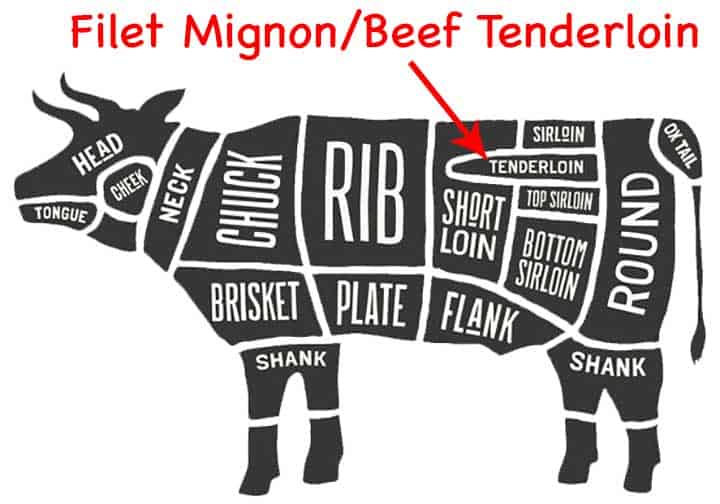

This recipe is listed in these categories. See them for more similar recipes.
👨🍳Recipe
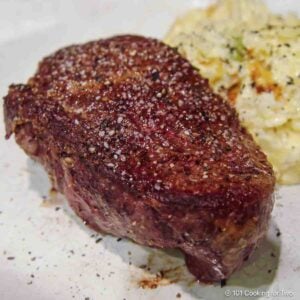
Pan Seared Oven Roasted Filet Mignon
Video Slideshow
Save this recipe to your inbox for later!
You may recieve the email without subscribing if you wish, but the subscription is convienent and has an easy one-ckick unsubscribe.
Ingredients
- 2 beef tenderloin filet mignon - about 1-1 ½ inch thick and about 6-8 oz
- 1 tablespoon butter - or oil
- salt and pepper or other seasonings - to taste or 7:2:2
Instructions
- Preheat oven to 400°. Start with 1 to 1 ½ inch thick filets, about 6-8 oz each, and trim well. Rest at room temperature for 30-60 minutes if you have time.
- Pat dry well with paper towels. Season all sides to taste with the seasoning of your choice. Just kosher salt and black pepper or All-Purpose Seasoning is enough.
- In a cast iron or oven-safe skillet, melt 1 tablespoon of butter over medium-high heat.
- When hot, sear both sides of the filets for 2-3 minutes—sear, flip, sear, and give them a final flip before putting them into the oven.
- Transfer to the preheated oven. Cook to your desired internal temperature minus about 3°-4°. Medium-rare takes about 9-11 minutes to reach an internal temperature of about 135°- 140°. If you want the meat rare, check the internal temperature when it goes into the oven. Also, check the temperature a few minutes early to prevent overcooking.
- Remove from pan, tent lightly with foil on a plate, and rest for 5-8 minutes before serving.
Recipe Notes
Pro Tips:
- An 8 oz filet will be about 2-3 inches in diameter and 1 ¼ to 1 ½ inches thick. Quality matters a lot with filets. Use prime if you can, but choice grade will work.
- Resting at room temperature will help you get the final internal temperature you want without drying the surface of the meat.
- Try to season one hour before cooking or just before cooking.
- You may use butter or oil in the pan. Butter has a lower smoke point, but I have never had an issue.
- Pan and butter should be hot, and the meat should dry and seasoned before starting to sear.
- Sear each side to approximately the final color you want and do a final flip just before going in the oven.
- If you want rare, especially if the filet is thinner, check the temperature when it goes in the oven.
- I suggest checking the internal temperature of the filet about 4-5 minutes after going into the oven.
- The time is very variable here, depending on the thickness of the meat, the exact starting temperature, the stovetop, the amount of searing, the exact oven temperatures, and the pan. There are many excellent reasons NOT to go by time. Time estimates are given as guides for time management.
- PLEASE USE AN INSTANT-READ THERMOMETER. DO NOT COOK BY TIME ALONE; YOU MUST CHECK INTERNAL TEMPERATURE.
- Times are provided to help with planning only. You are responsible if you overcook a filet. You can always cook it a bit more later, but you can not uncook an overcooked filet.
- Remove from the oven a few degrees below your final desired temperature. It will rise a few degrees when tented.
- Let rest tented for 5-8 minutes before serving.
Your Own Private Notes
To adjust the recipe size:
You may adjust the number of servings in this recipe card under servings. This does the math for the ingredients for you. BUT it does NOT adjust the text of the instructions. So you need to do that yourself.
Nutrition Estimate
© 101 Cooking for Two, LLC. All content and photographs are copyright protected by us or our vendors. While we appreciate your sharing our recipes, please realize copying, pasting, or duplicating full recipes to any social media, website, or electronic/printed media is strictly prohibited and a violation of our copyrights.
Editor's Note: Originally published March 10, 2012, updated with expanded options, refreshed photos, and a table of contents to help navigation.


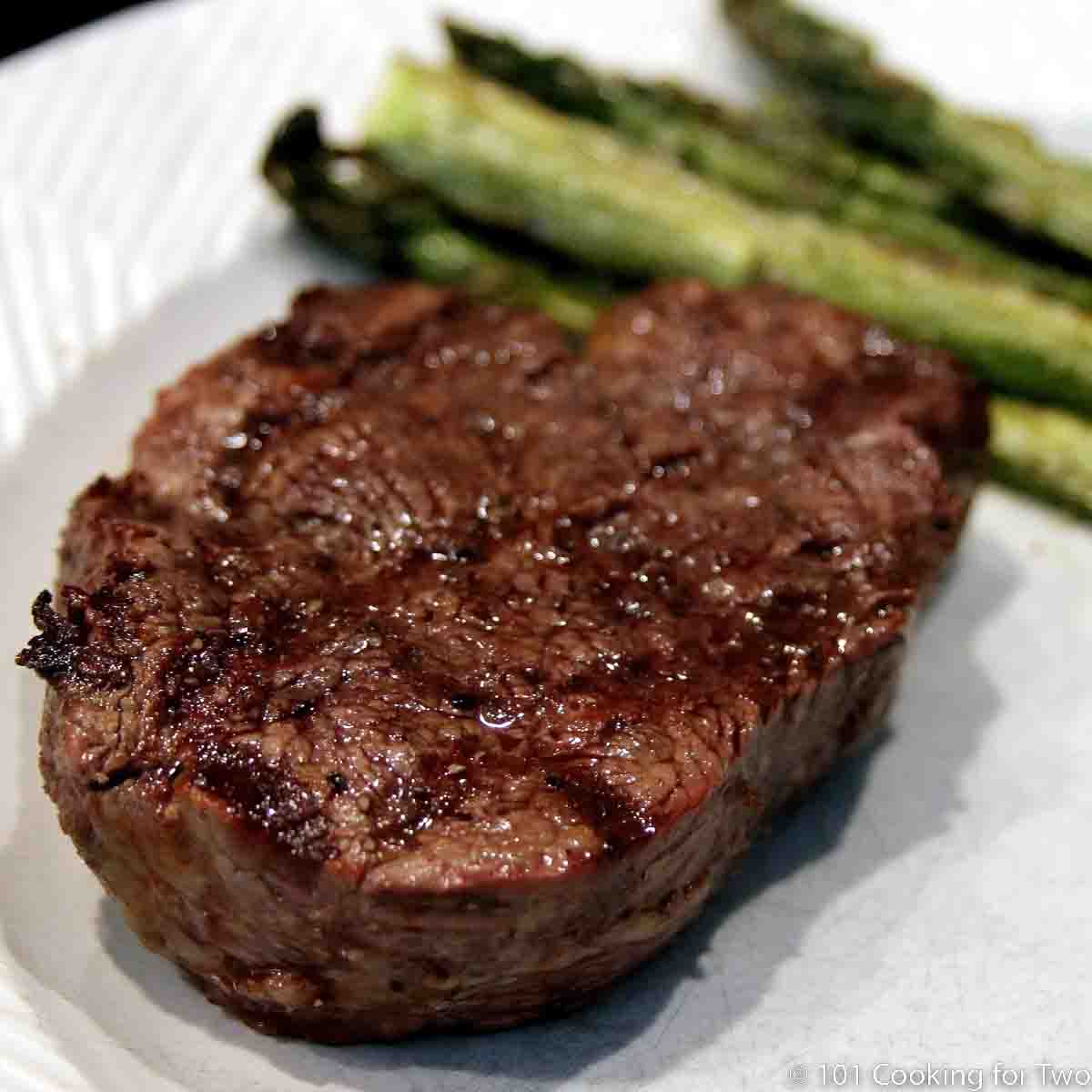
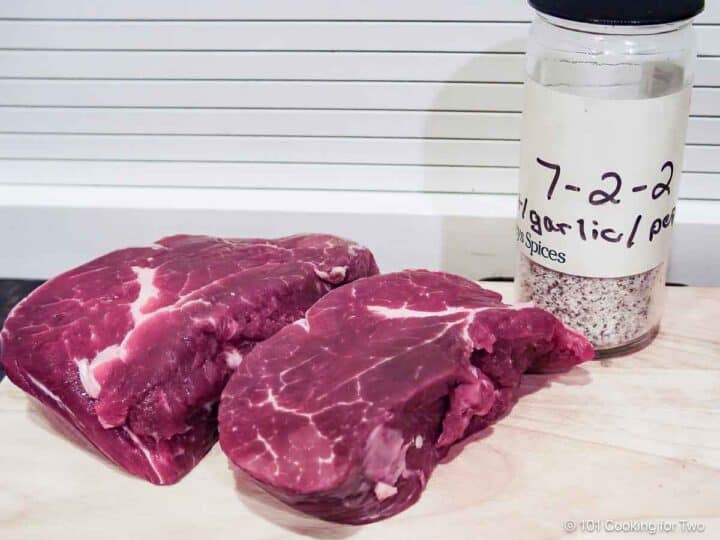
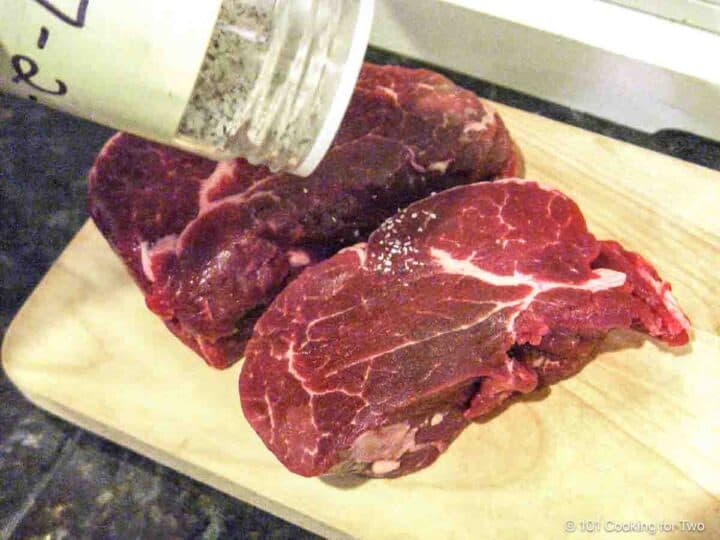
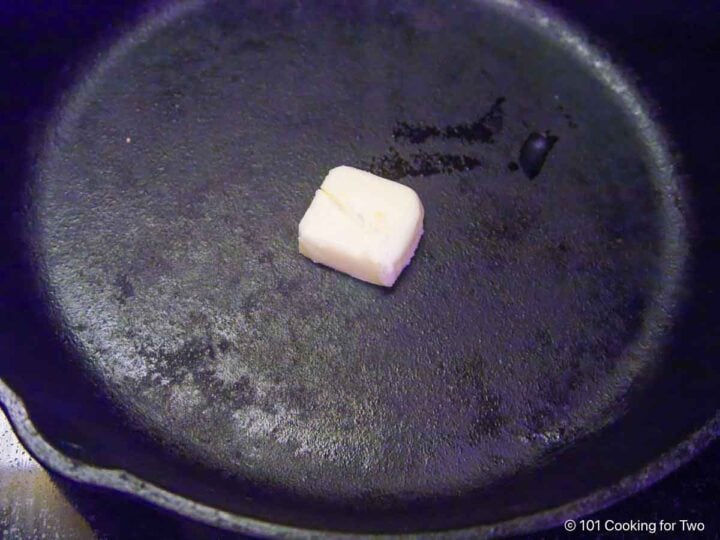
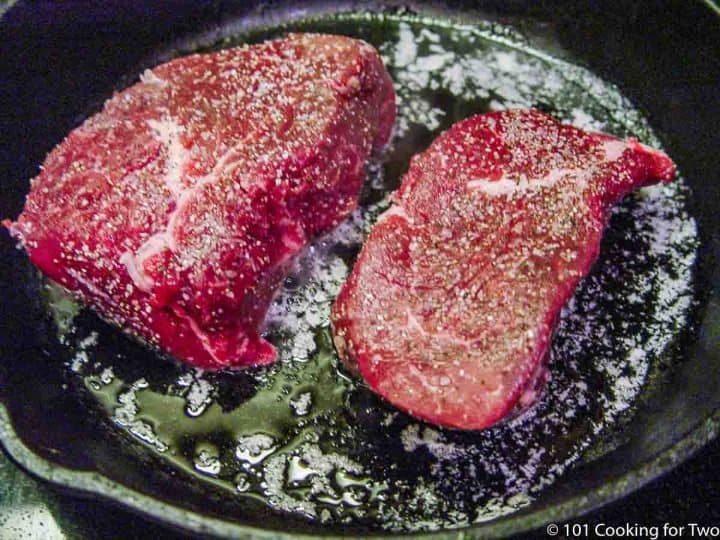
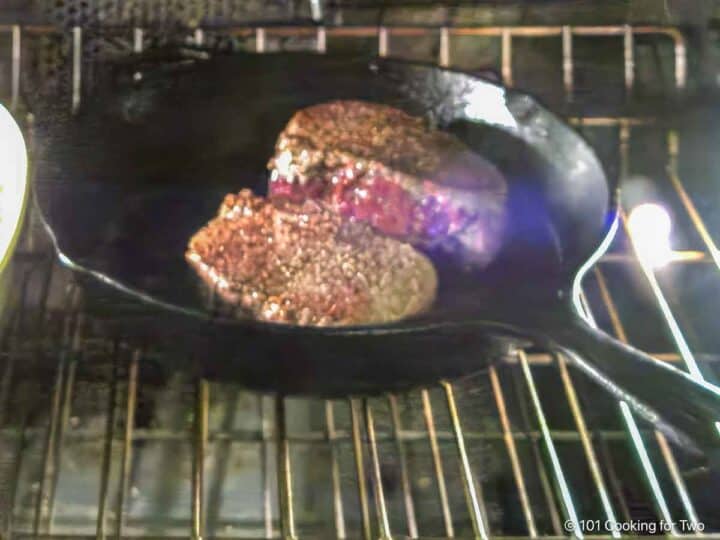
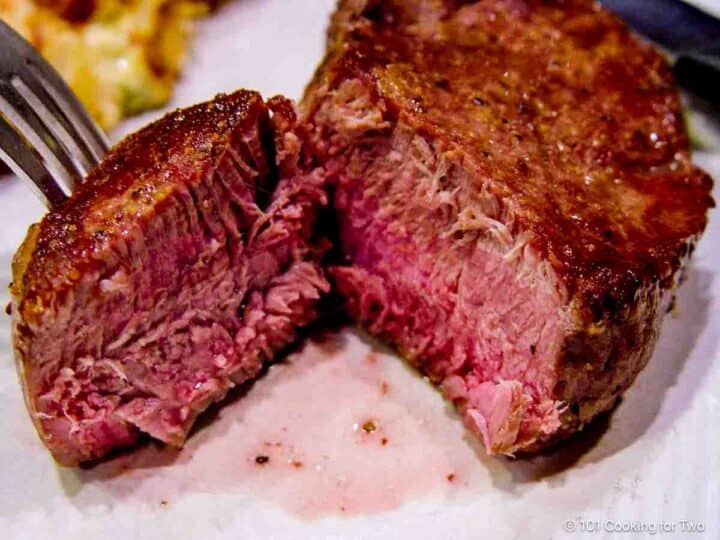

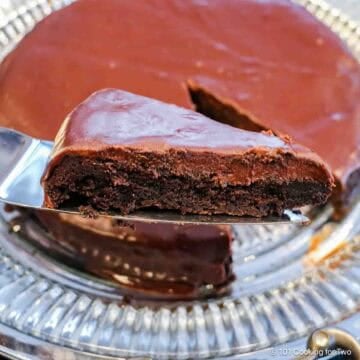
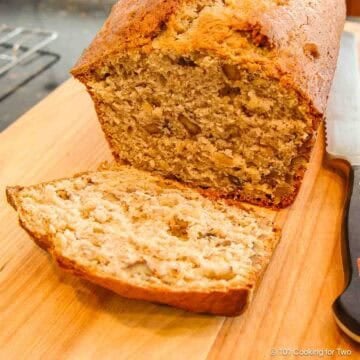

Randy Bowman says
When pan searing what do you use if you don't have a cast iron pan ?
Dan Mikesell AKA DrDan says
Hi Randy,
Welcome to the blog.
Any oven-safe skillet will do. Most stovetop skillets are oven-safe to a set temperature determined by the manufacturer. Mine are all over 400°, mostly 450° or 500°. It was on the paperwork when you bought it but we all toss that, so do a search for your skillet and be sure they are oven safe to 400°. I will add that 400° oven is arbitrary and you can use 350° if needed, it will take a bit longer.
Now, it you just aren't sure. You can preheat an oven safe pan while searing and transfer the filets after searing on the stovetop to the oven pan to finish to temperature.
Hope that helps.
Dan
Gina says
Perfect instructions, perfectly done, couldn’t be easier! The timing chart was very helpful. Thank’s doc.
Dan Mikesell AKA DrDan says
Hi Gina,
Welcome to the blog. When I was rewriting I felt the frame around the timing chart was a good idea... it is what most people are looking for, so just highlight it.
Thanks for the note and rating.
Dan
Deborah L says
Dr Dan, This is an easy recipe and great taste! I'm thinking of making it as filet au poivre next time. Your sauce recipe says to add minced scallops. Really? Should that read scallions? or shallots? That seems an indignity to the scallops.
Dan Mikesell AKA DrDan says
Hi Deborah,
Thanks for the note and proof read. That paragraph was copied from a 2010 post that I deleted, so you are the first to find it in 13 years.
I changed it to green onions that I think most home cooks will understand better. I also gave the post a fast cosmetic buff-up but do not rewrite anything else. (opps, I did change the weight and thickness range to 1 -1/2 inches and 6-8 oz. I have been doing a lot of 6 oz filets over the summer.
Dan